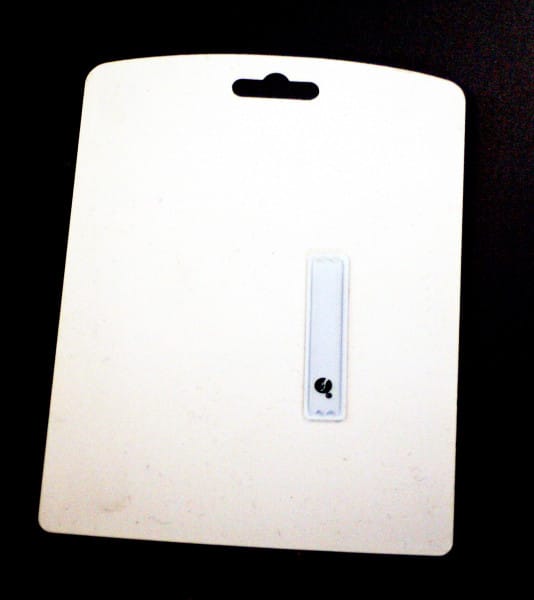Source tagging is the most effective security strategy that retailers use to prevent theft. The process involves the direct application of electronic security tags to consumer products at the “source” (the facility that manufactures and/or packages the product) rather than by in-store labor.

Source tagging saves retailers time and money because securely protected, ready-to-sell merchandise is delivered straight to stores. Without the need to execute source tagging in-house, retailers can focus on top priorities – to minimize loss due to theft and move inventory at a faster rate.
What is Source Tagging?
Electronic security tags were invented and patented in 1966 by New York entrepreneur Arthur Minasy. The original prototype contained tiny circuits that used Radio Frequency (RF) technology to communicate with an in-store antenna connected to an alarm. While rough, the system worked. Minasy capitalized on the success of the new security system by founding the Knogo Corporation, which went on to sell security devices to retailers for many years.
Despite the fact that retail security tags have been in use since the mid-1960s, source tagging at the point of manufacture didn’t catch on until the early-1990s. This was due to years of extensive product development and negotiations between major retailers, consumer-product manufacturers and EAS vendors.
How EAS Tags Work
Each EAS tag contains a special sensor that communicates with an in-store Electronic Article Surveillance (EAS) system to detect theft. When a tagged item is purchased, the tag is deactivated and in some instances, entirely removed. If an item is stolen and the tag remains active, the sensor will trigger an alarm if a shoplifter attempts to exit the premises. The specific functionality of EAS tags, however, depends on the type of surveillance system in use.
Sensormatic EAS systems and tags are developed using three primary types of loss prevention technology:
Acousto-Magnetic (AM): Provides an extended range for sensor detection. Installation is more flexible due to the tags being more resistant to interference from other electronics. These tags are usually thick and three dimensional, suitable for high-value items such as power tools and equipment.
Radio Frequency (RF): The most common choice for retailers due its lower price point and flexible application options. RF tags send simple signals that trigger an alarm system when active, but there is no way to differentiate one stolen item from the next.
Radio Frequency Identification (RFID): RFID tags are similar to RF tags except they transmit complex signals that uniquely identify the product it’s attached to. RFID tags contain an antenna that catches incoming radio waves and sends them back to a receiver, and a chip that generates a unique code for the tag. Unlike RF tags, RFID tags work best at shorter distances.
Common EAS Tag Applications
Electronic security tags are commonly affixed to retail products such as clothing, electronics, CDs, DVDs, and video games. An evolution in technology and design, however, led to the development of labels and tags that are available in a wide range of sizes, which has made security tags more accessible to food, grocery, and cosmetics retailers. Tags that were once bulky and cumbersome to apply or remove are now discrete and integrated with packaging, further acting as a deterrent to shoplifting.
While source tagging is most commonly used to detect and prevent the theft of retail merchandise, EAS tags can also guard against the removal of private or public property, such as university media or library books. Tags for these items are created using RFID technology.
How to Choose the Best Security Tag
It’s important to note that there is not usually a one-size-fits-all solution when selecting the best EAS tag for retail merchandise. Product-specific factors such as the value, size, and shape of the item must be taken into consideration.
Sensormatic, Checkpoint and All-tag are three major EAS system providers. EAS security devices include tags, labels, deactivators, detatchers, source tagging machines and more.
Engineered Automation of Maine specializes in the development of custom solutions to streamline the process of packaging and tagging products for retailers. Our highly qualified team provides a range of manufacturing automation services, from custom engineering to standardized labeling machines. Our commitment to continuously improve products, services, and processes helps maximize manufacturing efficiency for your business. Contact us to learn how you can save time and money today.
Machine Vision Integrators